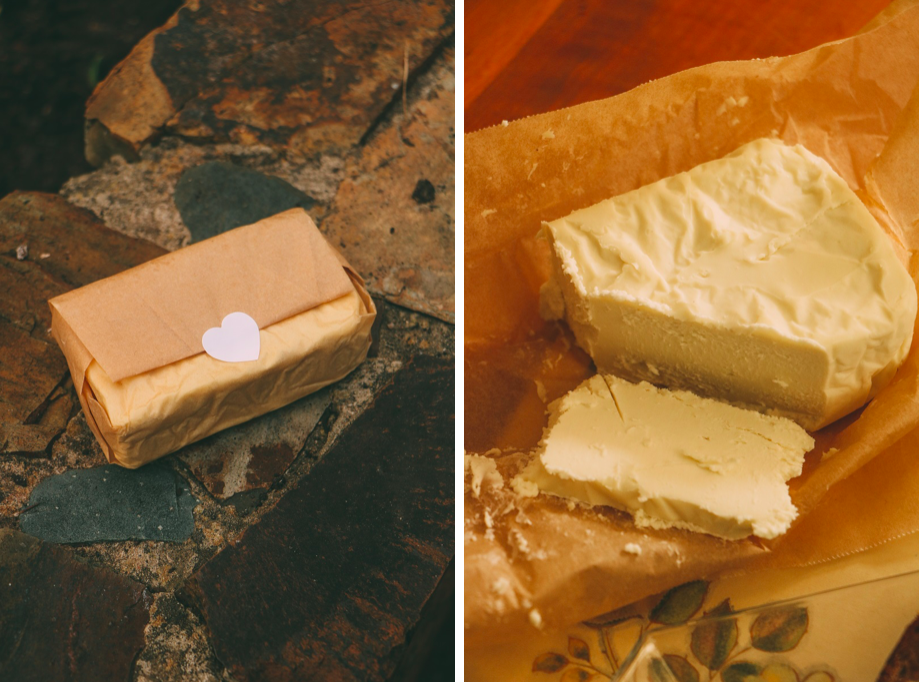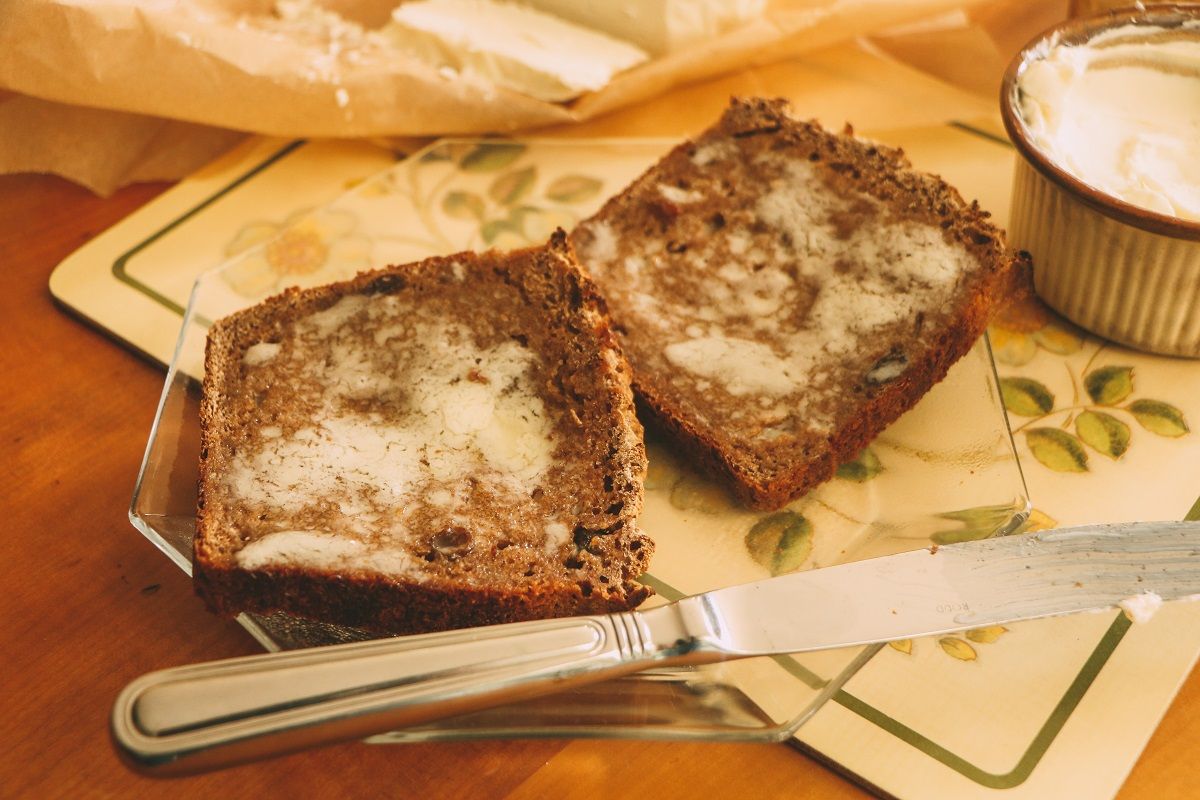Vegan Butter
Wow, this feels like a moment! I'm finally sharing my recipe for impeccably creamy homemade vegan butter. I am SO proud of this one! It has a beautiful buttery taste - to an almost curious length - is legitimately spreadable (all the bonus points for *knife feel* - which is surely a thing) and melts like a dreaAm ~ not too fast, not too slow.
I have tested most recipes for vegan butter that speckle the internet and the big-name cookbooks (namely Miyoko & Erin McKenna). All were delicious, however, I knew I could make an ever creamier version with a taste that didn't simply dissolve into the carrier it was applied. And I'm pleased to say, I've achieved just that!
Do read all my notes before making it. Vegan butter sounds somewhat mysterious even when you've seen it (and tasted it) to believe it! But it's a very simple recipe once you understand the function of each ingredient and what you can use it for.
most similar to ~ Natruli butter (although stronger in flavour, slightly creamier & more spreadable). It's miles ahead of Nuttelex - which I think is the biggest reason to make it (if you live in Australia, where our vegan butter options are pitifully limited).
use ~ how you would regular butter! Spread it on toast, bake with it (although it doesn't cream exactly like normal butter, although more so than vegan margarine), sautéing and pastries (including lamination). I'm not 100% convinced this is the vegan butter recipe for buttercreams and mock creams, as I think a lighter-flavoured version would be less rich (which to me is preferable - but each to their own).

Ingredient Function
- Unscented (or deodorised) Coconut Oil - forms the base of the recipe. It's neutral taste is the perfect foundation, and being solid at room temperature mimics butter's temperament.
- Light-flavoured Vegetable Oil - helps with spreadable consistency & it's complex taste.
- Unsweetened Soy/Rice Milk - serves as the other main component of vegan butter. Forms an emulsion with the oil, creating a creamy solid-mayonaise (but less oily) like consistency. Use an organic soy/rice milk with as few gums as possible. Whatever soy milk you use (or rice milk for a soy-free version - the natural sweetness creates a different, but equally delicious rendition), don't fret about the taste being detectable in the end result. This is a recipe which is far far more than the sum of it's parts.
- Coconut Milk - oosh my favourite ingredient. You can't taste it, but it helps create a ludicrously creamy & spreadable consistency.
- Salt - obviously! And very important. If you plan on using this butter for sweet applications, then I would cut back or remove it entirely in that instance.
- Lecithin Granules - don't fret! These are very easy to find I promise! One of the OG (original) health food store ingredients from way back when. They are derived from either sunflower or soy and act as an emulsifier - creating a glorious creamy consistency.
- Nutritional Yeast - adds necessary umami-ness that helps builds a complex dairy-like savoury profile. Don't skip it.
- Lemon Juice - a little acidity to help balance everything. Can be swapped from apple cider vinegar if you like.
Ingredients
- 1 1/2 cups (335g) unscented coconut oil (deodorised), melted
- 3/4 cup (157g) light-flavoured vegetable oil (eg. sunflower, grapeseed, canola)
- 3/4 cup (188ml) unsweetened soy or rice milk (as organic, few ingredients & few gums as possible)
- 1/4 cup (70g) coconut cream (or alternatively coconut milk)
- 1 tbsp (10g) salt
- 2 tbsp lecithin granules
- 1 tsp nutritional yeast
- 1 tsp lemon juice
Method
- Add all the ingredients into a high-powered blender and blend on high speed for a couple of minutes until smooth & creamy. The mixture will get thick, so scrape down/push the mixture down the blades to ensure an even emulsion.
- Using a spatula, pour/scrape the mixture into your chosen moulds/containers. It's very easy to cut up once set, so a lined loaf tin that you can then remove & slice into blocks, works well. Smooth over the top and refrigerate for a few hours until set.
- Store butter in the fridge when not using it. It will still be spreadable at this temperature. Use within three weeks.
